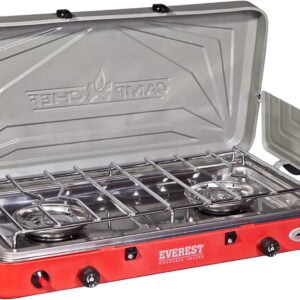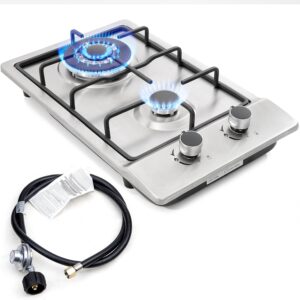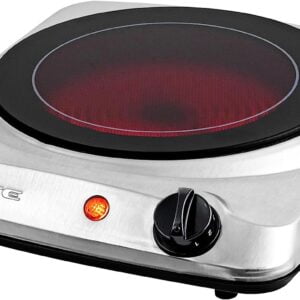2 Burner Portable Gas Stoves
Showing all 3 results
-

Coleman Triton+ 2-Burner Propane Camping Stove, Portable Grill/Stove with Adjustable Burners, Instant Push-Button Ignition, Wind Guards, and a Total of 22,000 BTUs of Cooking Power
$109.99 -
Sale!

Camp Chef Everest 2 Burner Portable Stove
Original price was: $169.99.$159.99Current price is: $159.99. -

Forimo 12-Inch Stainless Steel Gas Cooktop with 2 Burners, Drop-in Propane/Natural Gas Cooker, Dual Fuel 12″ Gas Stove Top for Easy Cleaning (12″W x 20″L)
$99.99
Guide to 2-Burner Portable Gas Stoves
A 2-burner portable gas stove is a versatile and practical cooking appliance for outdoor activities such as camping, picnics, tailgating, and even emergency situations. These stoves provide a convenient way to cook meals without the need for electricity. Whether you’re a seasoned outdoor enthusiast or a beginner, this guide will help you understand how to choose and use a 2-burner portable gas stove effectively and safely.
1. Considerations before purchasing:
- Size and Weight: Look for a compact and lightweight stove, as portability is a key factor. You’ll want a stove that is easy to carry and transport.
- BTU Output: BTU (British Thermal Units) measures the stove’s heat output. Higher BTU means faster cooking times, but it may also result in increased fuel consumption.
- Fuel Type: Most portable gas stoves use propane or butane canisters. Propane is more common and performs better in colder temperatures, while butane is suitable for warm climates but may struggle in colder conditions.
- Wind Resistance: Choose a stove with built-in windshields or consider buying separate wind guards to improve efficiency in windy conditions.
- Ignition System: Some stoves have an integrated piezo ignition, eliminating the need for matches or lighters.
- Cooking Surface: Ensure the stove has sufficient space for your cooking needs, such as using larger pots and pans.
2. Setting up the stove:
- Select a Safe Location: Set up the stove on a flat, stable surface away from flammable materials, overhanging structures, and low-hanging branches. Avoid using it inside tents or closed spaces.
- Attach the Fuel Canister: If using a propane stove, securely attach the propane canister to the stove following the manufacturer’s instructions.
- Check for Leaks: Before igniting the stove, check for gas leaks by applying a soapy water solution to the connections and hoses. If you see bubbles forming, there is a leak, and you should immediately turn off the gas supply.
- Open the Gas Valve: Slowly open the gas valve on the stove to allow the gas to flow.
3. Igniting the stove:
- Piezo Ignition: If your stove has an integrated piezo ignition, simply turn the burner knob to the “ignite” position, and it will create a spark to light the gas.
- Matches or Lighters: If your stove doesn’t have an ignition system, use long-reach lighters or matches to light the gas stove. Hold the flame close to the burner while slowly turning on the gas until it ignites.
- Safety Precautions: Keep your face, hands, and any flammable materials away from the burner when igniting it.
4. Cooking:
- Regulate the Flame: Adjust the burner knobs to control the flame’s size. A higher flame setting means more heat, while a lower setting reduces the heat output.
- Use Proper Cookware: Choose cookware that is compatible with the stove and suitable for outdoor use. Flat-bottomed pans work best to ensure even heating.
- Stability: Ensure that your cookware is stable on the stove grates to prevent accidental spills and potential injuries.
- Cooking Outdoors: Be mindful of wind conditions as they can affect the stove’s efficiency. Use windshields or set up the stove in a sheltered area if necessary.
5. Safety Tips:
- Never leave a lit stove unattended.
- Keep children and pets away from the stove.
- Use the stove in a well-ventilated area to prevent carbon monoxide buildup.
- Allow the stove to cool down completely before handling or storing.
- Follow all safety instructions and guidelines provided by the stove’s manufacturer.
By following this guide, you can safely and effectively use your 2-burner portable gas stove to prepare delicious meals during your outdoor adventures. Remember, safety is paramount, so always exercise caution and adhere to safety practices to avoid accidents. Happy cooking!



